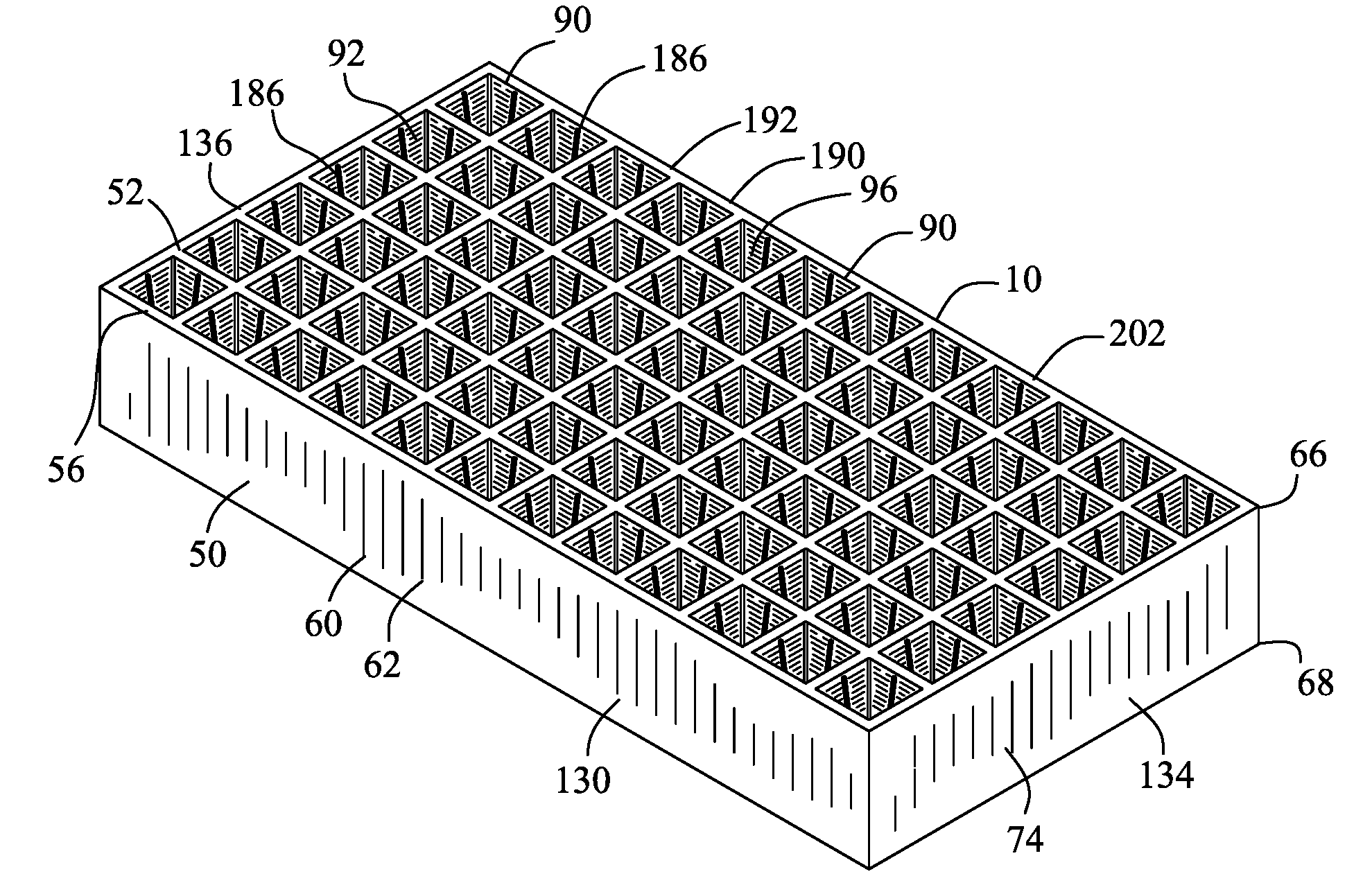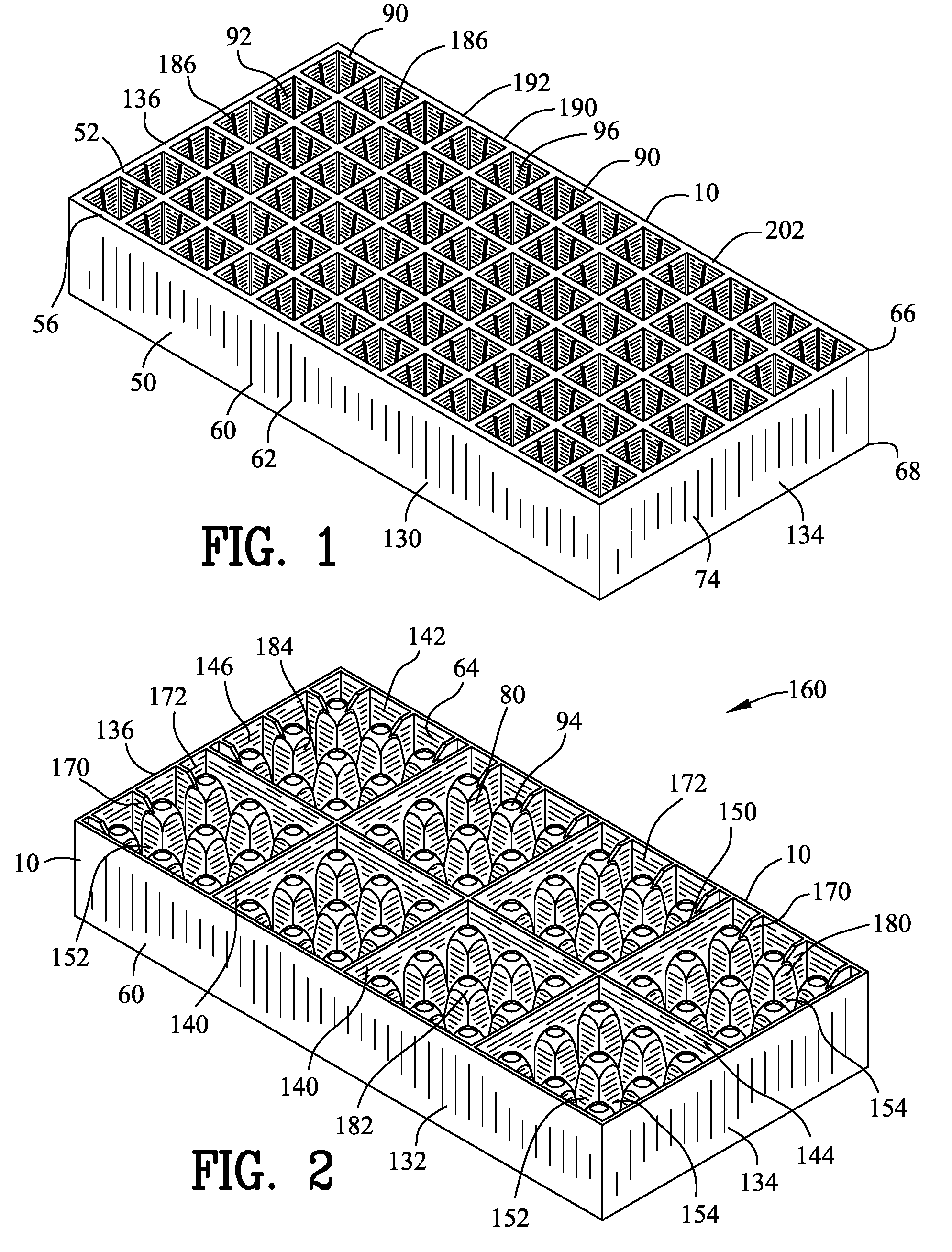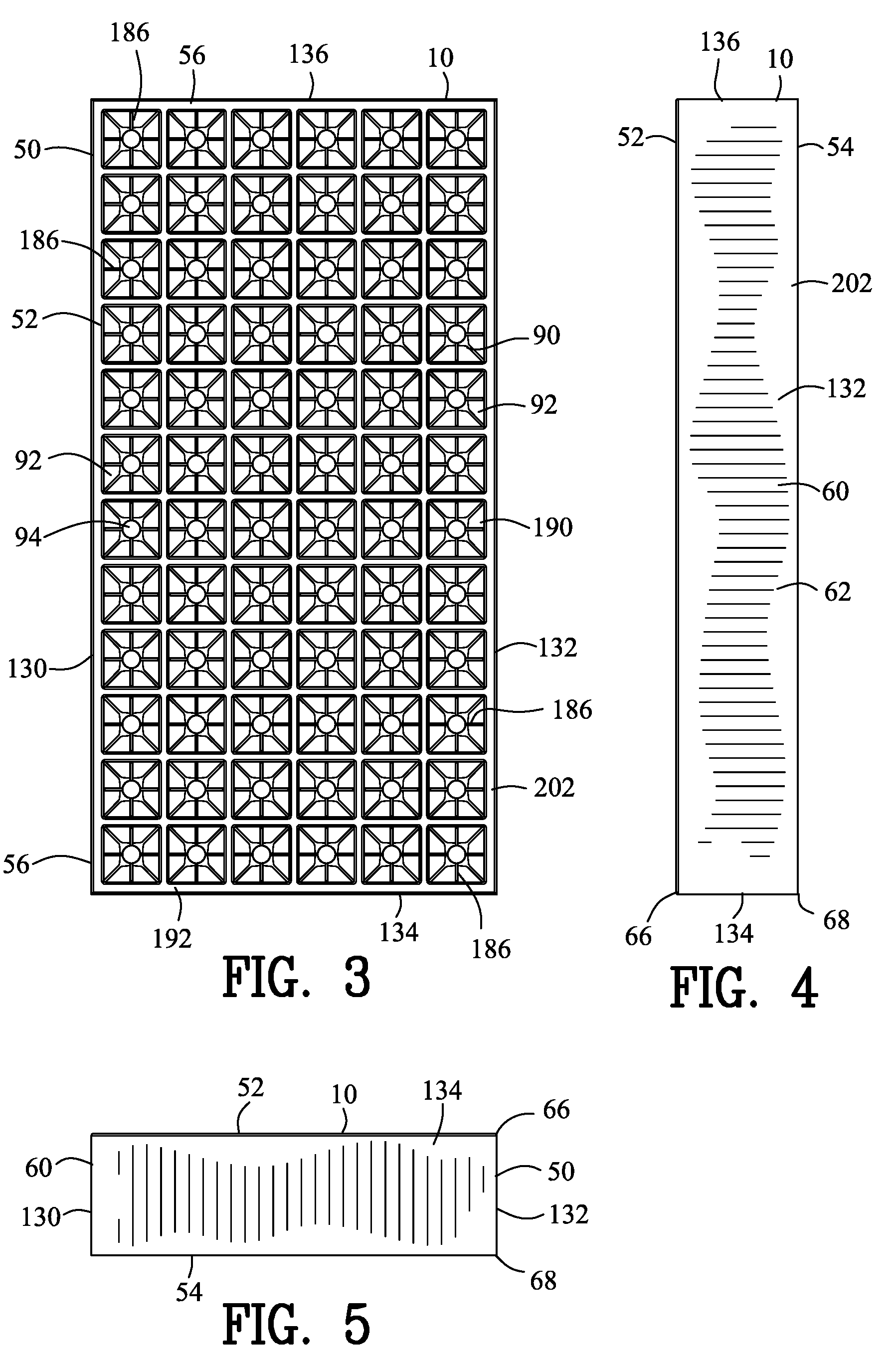Floating plant propagation tray
- Summary
- Abstract
- Description
- Claims
- Application Information
AI Technical Summary
Benefits of technology
Problems solved by technology
Method used
Image
Examples
Embodiment Construction
[0134]FIGS. 1-26 illustrate a floating plant propagation tray 10 for supporting soil 20, a plurality of seeds 22 and / or a plurality of seedlings 24. FIGS. 9-13 and FIGS. 22-26, illustrate the plurality of seedlings 24 including tobacco seedlings 26, however the plurality of seedlings 24 may include when any other type of plant propagule 28 from a seed.
[0135]The floating plant propagation tray 10 is preferably positioned within a body of fluid 30. The body of fluid 30 may include but not limited to an agricultural water tank 32, natural pond 34 or other bodies of water. The body of fluid to 30 includes a liquid surface 36 and a liquid depth 38. As shown in FIGS. 9-13 and 22-26, the floating plant propagation tray 10 is supported by the body of fluid 30.
[0136]The floating plant propagation tray 10 comprises a tray plate 50 including an upper surface 52, a lower surface 54 and a peripheral edge 56. A tray wall 60 includes an exterior surface 62, an interior surface 64, a proximal edge ...
PUM
 Login to View More
Login to View More Abstract
Description
Claims
Application Information
 Login to View More
Login to View More - R&D
- Intellectual Property
- Life Sciences
- Materials
- Tech Scout
- Unparalleled Data Quality
- Higher Quality Content
- 60% Fewer Hallucinations
Browse by: Latest US Patents, China's latest patents, Technical Efficacy Thesaurus, Application Domain, Technology Topic, Popular Technical Reports.
© 2025 PatSnap. All rights reserved.Legal|Privacy policy|Modern Slavery Act Transparency Statement|Sitemap|About US| Contact US: help@patsnap.com



